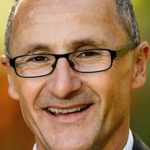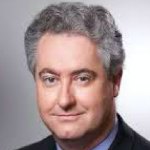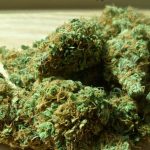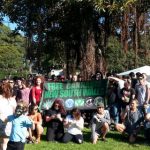Australia’s First Cannabis Medicine: An Interview With Little Green Pharma’s Fleta Solomon
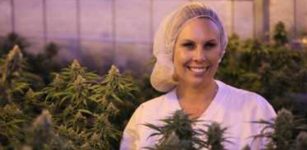
Locally-grown and produced medicinal cannabis products are finally available on the Australian market. Western Australian company Little Green Pharma is the first amongst a number of producers to deliver the long-awaited local product since cannabis medicines were legalised.
However, this highly-anticipated development has somewhat flown under the radar, as Little Green Pharma made the announcement on 23 August at the time when the nation was focused upon the Liberal leadership spill.
The LGP Classic 10:10 product is now available for national distribution via a pharmacy. And doctors have already been prescribing this wholly Australian produced medicine to patients, via the TGA Special Access Scheme. And it’s also available via authorised prescribers.
Little Green Pharma harvested its first cannabis crop last May. It was cultivated, without pesticides, in a hydroponic facility in WA’s South West region and then processed in a manufacturing facility near Perth.
The wait is coming to an end
Back in February 2016, the Turnbull government passed the Narcotic Drugs Amendment Act, which established a framework allowing for the legal cultivation, manufacture and distribution of medical cannabis products, in accordance with TGA guidelines.
However, the process of getting the legal product out there has been slow-moving. As of July this year, the Office of Drug Control had granted 41 cannabis-related licences, and only 18 of them were specifically for the cultivation and production of cannabis medicines.
To tide patients over during the wait for local product, the government announced an interim medicinal cannabis importation scheme in February last year. But, prices for legally imported cannabis medicines are exorbitant, with some reports putting the cost at $40,000 a year.
So, with the first locally-produced cannabis medicine on the market, and with more set to come, Australian medicinal cannabis patients are looking at being able to finally afford the medicine they need.
And one would hope that more of the estimated 100,000 patients who currently use medicinal cannabis products around the country will gain official approval to do so, which will provide them with access to legal product, rather than being forced to source their medicine on the black market.
So far, the TGA has only approved 1,204 applications to access medicinal cannabis products.
Doctors coming on board
Another stumbling block for patients trying to access cannabis medicines has been that many Australian medical practitioners are in the dark with it comes to medicinal cannabis and are hesitant to prescribe a product which until recently was outlawed.
But, this is changing. Dr David Caldicott, clinical lead at ANU’s Australian Medicinal Cannabis Observatory, has been delivering a medicinal cannabis workshop for doctors. While MediHuanna founder Dr Teresa Towpik has also been educating health professionals about the medicine.
Sydney Criminal Lawyers® spoke to Little Green Pharma managing director Fleta Solomon about the type of medicinal cannabis product her company has on offer, the process of obtaining a medicinal cannabis licence and the benefits that local products are set to bring Australian patients.
Firstly, Little Green Pharma has released the first locally-produced cannabis medicine. While the Office of Drug Control has only granted a limited amount of medicinal cannabis licences, other companies have been issued with licences similar to yours.
Ms Solomon, how’d Little Green Pharma get the finish line first?
Little Green Pharma were the second or third company to actually get a licence back in April 2017. The licence is one thing. But, what people don’t understand is there’s a permit that follows.
A licence is basically a plan of what you want to do in the future. And once you have a facility, then you can get a permit to actually start growing. We got the permit to start growing last October.
People talk about licences. There are 18 licences, but there are only a few companies that are actually permitted to start growing. We started growing in December after we imported our genetics and our seeds from overseas.
Being a private company, we were able to just get on with the job. We didn’t have to worry about announcements and shareholders. And it really helped because we could focus on the actual job and just get it done.
We were fortunate enough to be one of the first companies to get a licence. And thanks to that, we were the first to produce the locally-grown product.
I’m not sure how far away the other companies are, but it’s nice to know that Australian patients have a choice now.
What form of medicinal cannabis is the LGP Classic 10:10? And what sort of make up does it have in terms of its components?
It’s a ten-ten, so it’s an even balance of both cannabinoids THC and CBD. It’s a very gentle product to start a number of patients on.
Our first twelve patients were in the area of neuropathic pain. And 10:10 was a good place to start. But, saying that, it’s something for the doctors to decide.
We have another range of products coming out soon. That was just our first product. We have a high THC product and a high CBD product coming out in the next few weeks. So, that will be great to add to our collection of products, which are all oil based.
It’s a dose-controlled oil. And it’s very similar to traditional oils that you see from imported products from overseas.
And what sort of ailments and conditions is Classic 10:10 suitable for treating?
What we need to understand is that patients react quite differently to different therapies, and medicinal cannabis is no different. So, it’s up to the prescribing doctor to determine what sort of conditions may be suitable for cannabinoid therapy.
But, as I mentioned, neuropathic pain is one. The 10:10 and certainly other doses of cannabinoid therapy can really assist with it.
There are certain forms of childhood epilepsy, which can benefit from cannabinoid therapy. And you’ve also got spasticity symptoms in multiple sclerosis. And there are certain patients that are undergoing chemotherapy, which it may also assist.
So, the product has been available since 23 August and doctors have been prescribing it since then. What’s the response been like from patients, as well as doctors so far?
Patients have been amazing. The patients are really wanting to access cannabinoid therapy in general.
The big challenge for us is aligning doctors and patients together. Because it’s a strictly controlled environment, and it’s the same with any pharmaceutical product where you can’t advertise.
So, we are unable, due to federal regulations, to actually tell patients that this doctor will prescribe it. That’s something we are unable to do.
The biggest challenge for us is that there are a handful of doctors – probably 10 percent of doctors -who are really open to prescribing, but we’re unable to point them in the right direction.
So, there’s a bit of a mismatch between the patients who want to try cannabinoid therapy and the doctors who are actually willing to prescribe.
It becomes more complex when the TGA recommend that patients undergoing cannabinoid therapy need to be prescribed by their regular doctor, who is in the best position to determine if cannabinoid therapy is right for them.
That’s where patients sometimes find it quite difficult, because sometimes their doctor doesn’t necessarily understand cannabinoid therapy because it is so new.
You have to remember it was only a few years ago that this substance was prohibited and therefore it’s a real shift in attitude that’s required from doctors. But, they’re certainly very open.
It’s an education process. And it’s what’s required by all the cannabis companies in Australia to educate our doctors.
You’ve already mentioned this, but in April last year, the Office of Drug Control granted Little Green Pharma a medicinal cannabis licence. And you mentioned that you subsequently received a permit. There have only been around 40 medicinal cannabis-related licences issued nationwide.
What was the process like in obtaining the licence? And how difficult was it to get?
It was an online application and we were fortunate enough to have been growing hemp previously. So, our experience with growing Cannabis sativa was quite possibly highly regarded by the Office of Drug Control.
What’s happening at the moment, is there was an initial report about the cannabis legislation and it was estimated that less than 20 companies would apply to become a producer and cultivator of medical cannabis, and since then, there’s been 170 companies.
And the Office of Drug Control are only set up for 20 companies. So, the process has become quite under resourced. And although they’re doing a great job, they need to look at and review each application.
So, the process can be quite slow, but we were quite fortunate, because we were one of the first and they didn’t have as many applications at the time. And so, we were able to get through that process quite quickly.
Classic 10:10 is the first Australian product on the market, but there are whispers that others are soon to follow. What sort of a difference is having locally-grown and produced product available going to have for Australian patients?
Two things. One thing is that patients have choice. They’re not restricted to imported products. Patients and doctors that prefer locally-grown have that choice.
They know exactly what’s going to be in the bottle because our regulations are so strict. And they know the quality is going to be amazing.
And secondly, it’s affordable. We want this to be the most affordable product in Australia. We can’t necessarily guarantee that because we don’t know what the other price points are, but we’re certainly the first company to lower our costs and make it more affordable for Australian patients.
Medicinal cannabis patients have been waiting for local product to appear since early 2016. However, there hasn’t been too much coverage regarding the first locally-produced medicine hitting the market. Why do you think that is?
Once again, we’re a private company. So, we’re not required to make public announcements to shareholders. And we actually haven’t done a lot of media.
Also, again, we’re restricted on what we can and can’t say to the public, in terms of not being allowed to advertise, and we can only be very factual. It’s a limiting factor in medical cannabis in the regulation across Australia.
If we were a listed company, it gives you a little bit of an advantage, because you have to make an announcement. But, when you’re private you don’t have to make these announcements, so you don’t have to be going to the media.
And recently, when we launched our product, it was at the time when there were a lot of things going on with the government and there were a lot of other things making headlines.
But, we didn’t need to. We know that we’ve got the first product and we know that patients are using it and can actually benefit from what we have to offer and that was enough for us.
And lastly, your first product’s out there on the market, and as you’ve said, you’ve got a few others that will be available in the next couple of weeks. Where do you see this all progressing from here? What direction is Little Green Pharma heading in?
We have a requirement to look after Australian patients. And as you’ve mentioned earlier, there are probably many patients at the moment who can’t actually access cannabis in Australia. And you’re correct. I think there’s just over 1,200 patients.
What we’ll find is that as doctors become educated that that number will start to increase.
Our vision from the very beginning was we want to help as many people as we can and there’s thousands across the world. And so, we are going set up our facility and expand our operation to accommodate the thousands of people that we can actually help and benefit from cannabinoid therapy.
We are looking to export excess product through overseas markets, such as Germany, where millions of people are actually waiting for cannabinoid therapy.


